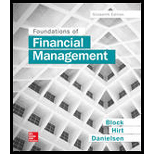
To name: The three industries in which mergers are prominent.
Introduction:
Merger:
An agreement between two already existing companies that combines them to form one single company is termed as a merger. This is done for the expansion of business, its share in the market and value of shareholders.
Answer to Problem 1DQ
The three industries in which mergers are prominent are –
Telecommunications
Pharmaceuticals and Health care
Public Utilities
Explanation of Solution
Mergers are common in many industries such as, computer, technology, telecommunications, public utilities, medicines, healthcare and energy. It helps expand businesses and competition in the markets.
In telecommunications industry, the growth is so rapid that a lot of funds are required for the growth of the business. Mergers help companies to acquire more funds and procure and use resources mutually.
In healthcare and pharmaceuticals industries, many firms of small and medium size merge to meet the competition in the markets and industry.
In retail sector and public utility industries, mergers and acquisitions seem attractive for capturing and increasing market share.
Want to see more full solutions like this?
- In the US, about O80%, 20% O 99%, 1% O 60%, 40% 25%, 11% of all reported merger and acquisition transactions in 2012 exceeded $500 million, while about exceeded $1 billion.arrow_forwardQ9. Which of the following are generally not considered motives for mergers? Desire to achieve antitrust regulatory approval Desire to achieve economies of scale Desire to achieve economies of scope Strategic realignment Desire to purchase undervalued assetarrow_forwardWhat five major “merger waves” have occurred in the United States?arrow_forward
- FASB Standard No. 164, describe the differences between mergers and acquisitions for not-for-profit organizations/arrow_forwardWhat are horizontal, vertical, congeneric, andconglomerate mergers? Are the different typesof mergers equally likely to pass muster with theJustice Department?arrow_forwardSeveral reasons have been proposed to justify mergers. Among the more prominent are (1) tax consideration, (2) risk reduction, (3) control, (4) purchase of assets at below replacement cost, and (5) synergy in general. Which of the reasons are economically justifiable? Which are not? Which fit the situation at hand? Explain.arrow_forward
- Examples of two or more companies that have gone through merger and acquisition in most recent years?arrow_forward1. As a result of the merger, what is the goodwill? 560,000 638,500 650,000 11,500 2. what is the Retained Earnings after the merger? 10,465,250 10,269,250 10,350,500 10,280,750 3. what is the net increase or (decrease) in the stockholders' equity of SD Corp. after the merger? P8,904,250 P8,709,250 (P7,604,250) P7,604,250arrow_forwardWhat amount should be recognized as gain on reversal of share appreciation rights in 2021?*see attached a. 1,600,000b. 1,200,000c. 400,000d. 0arrow_forward
- Explain the mechanisms of the Tri Party Repo system, and the significant systemic issues that were exposed in 2008, and again in early 2020?arrow_forwardThere are only five companies in the market. Company B and Company D are planning to merge. Market shares of all the competitors are shown in the table below. Company Market share, %% A 4040 B 2525 C 1414 D 1212 E 99 Calculate the difference between the HHI value after the proposed merger and the initial value. Write the exact answer. Do not round.arrow_forwardExplain 2 reasons of mergers to happen.arrow_forward
 Intermediate Financial Management (MindTap Course...FinanceISBN:9781337395083Author:Eugene F. Brigham, Phillip R. DavesPublisher:Cengage Learning
Intermediate Financial Management (MindTap Course...FinanceISBN:9781337395083Author:Eugene F. Brigham, Phillip R. DavesPublisher:Cengage Learning


